Those of you who’ve cooked from The CSA Cookbook know that I love to use the odds and ends of vegetables in my recipes — in part because I try to waste as little as possible in the kitchen, and because these “scraps” are vegetables in their own right, full of flavor and texture.
Chard stems are one such scrap that’s sometimes discarded or composted when recipes only call for the tender leaves. The stems, however, have a mild flavor that plays well with other ingredients and a pleasant crispness similar to celery ribs.
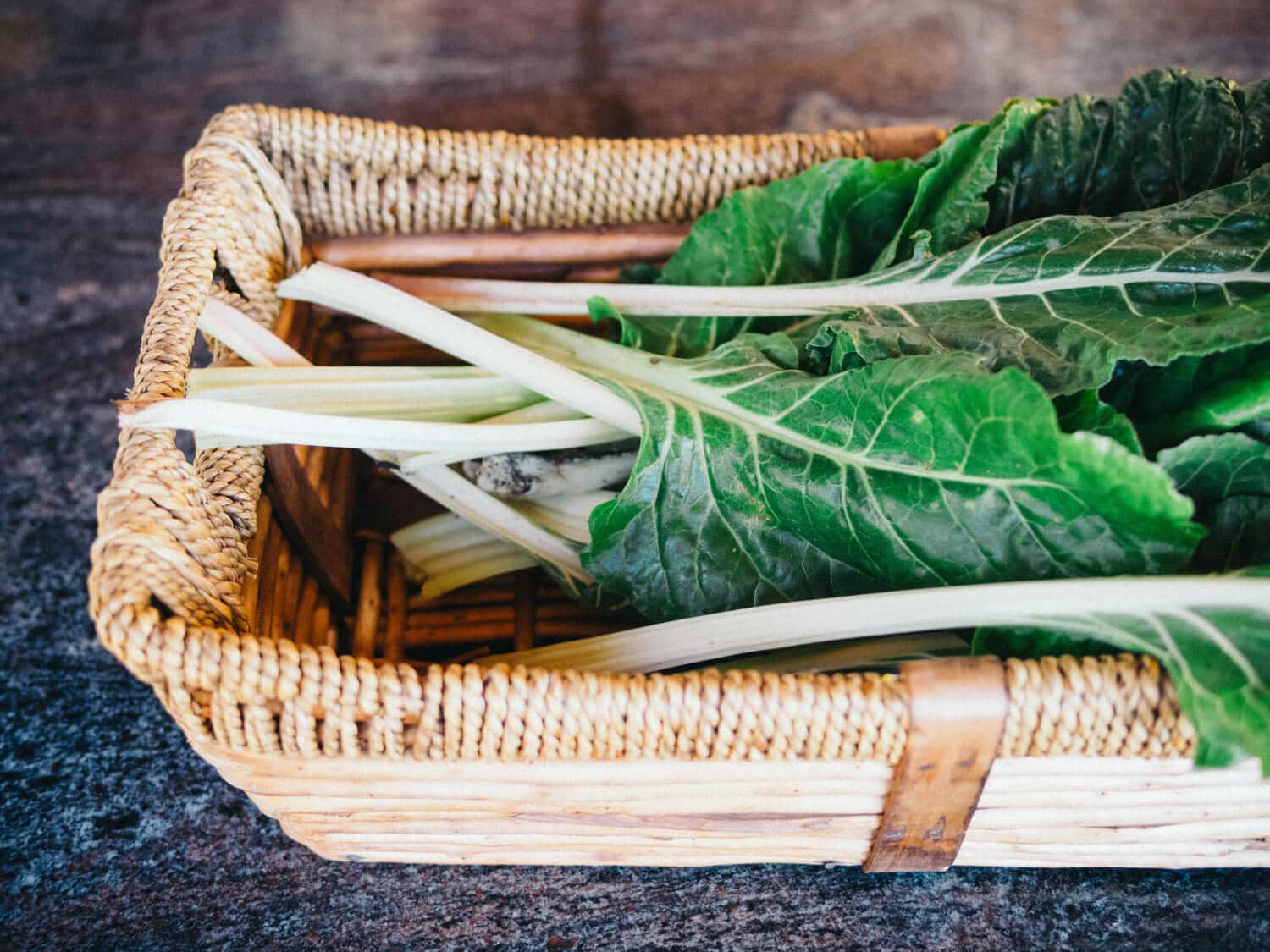
If you find yourself with a good handful of stems, don’t toss them — pickle them!
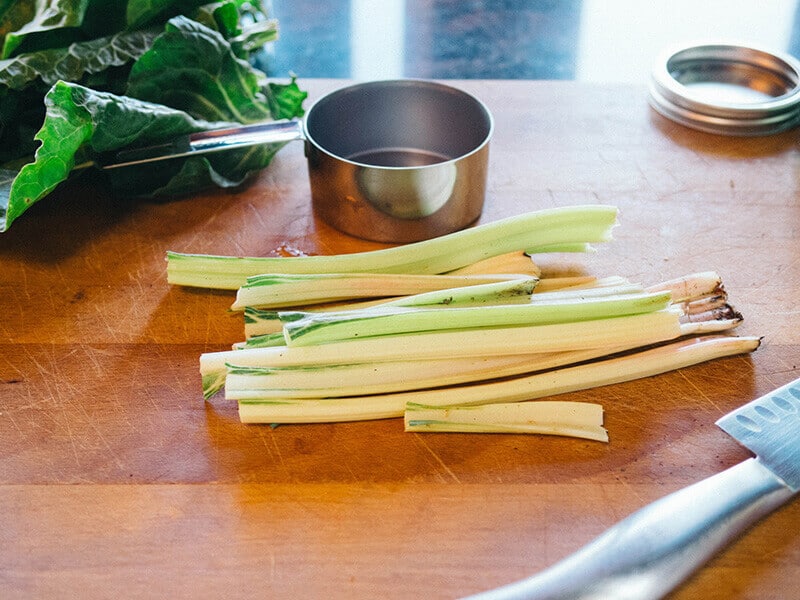
The sriracha pickling brine in this recipe is spicy and tangy, but not so much that you can’t taste the food. It can also be reused for another round or two of chard stem pickles after you eat through the first batch.
Best of all, they’re refrigerator pickles, meaning no boiling water bath is necessary, and beginner canners need not be intimidated. Just grab a jar and go! Get the recipe here or keep scrolling to learn how to make your own.
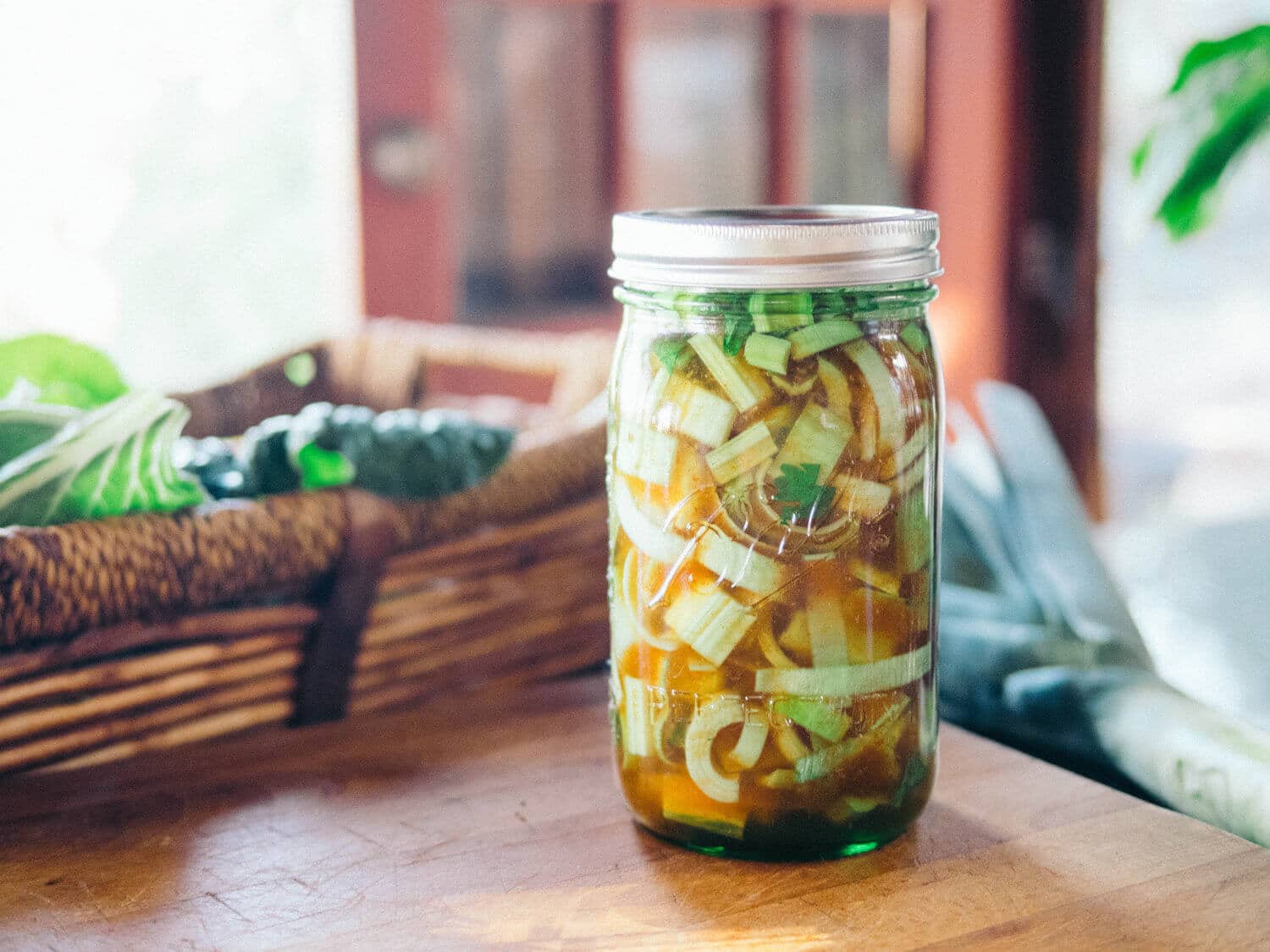
Sriracha Stem Pickles
Makes 1 quart
Ingredients
2 cups chopped chard stems
1 cup sliced leek, white and light green stem only
1/4 cup chopped cilantro leaves
1 teaspoon grated ginger
1 cup white vinegar
1 cup water
1/2 cup sugar
2 tablespoons sriracha
Making Sriracha Stem Pickles
Fill a jar with the chard stems, leek, cilantro, and ginger, alternating in layers.
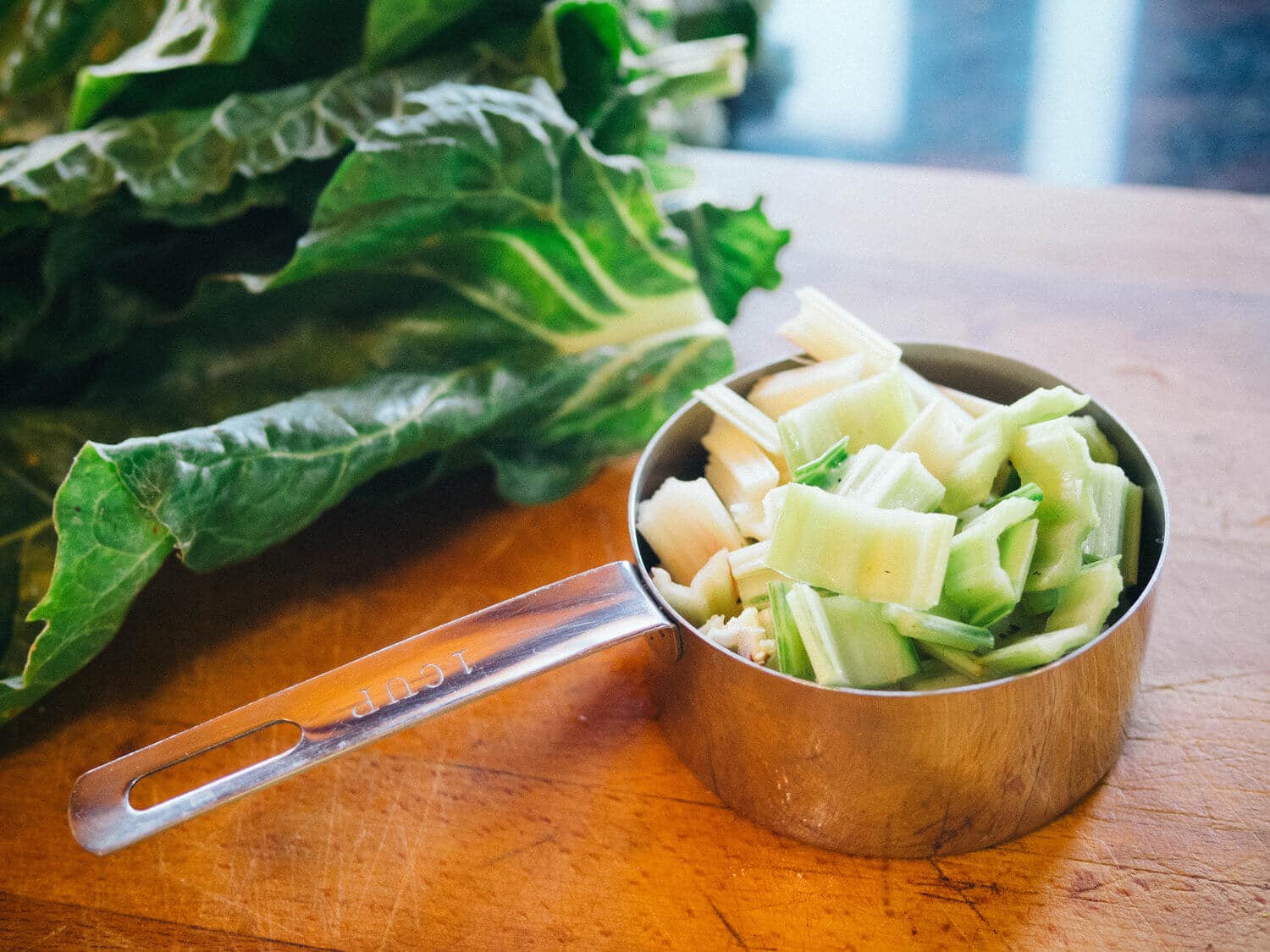
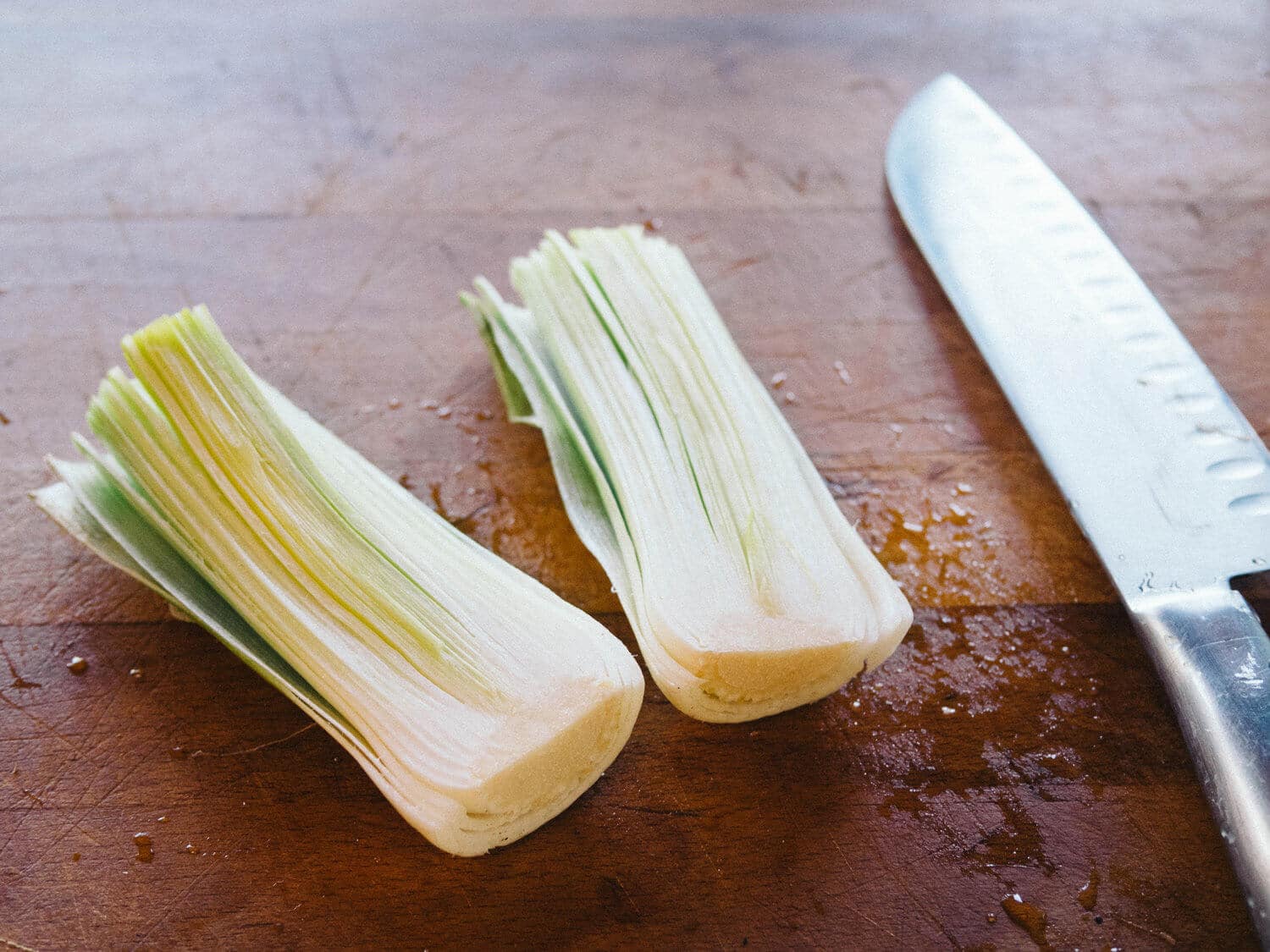
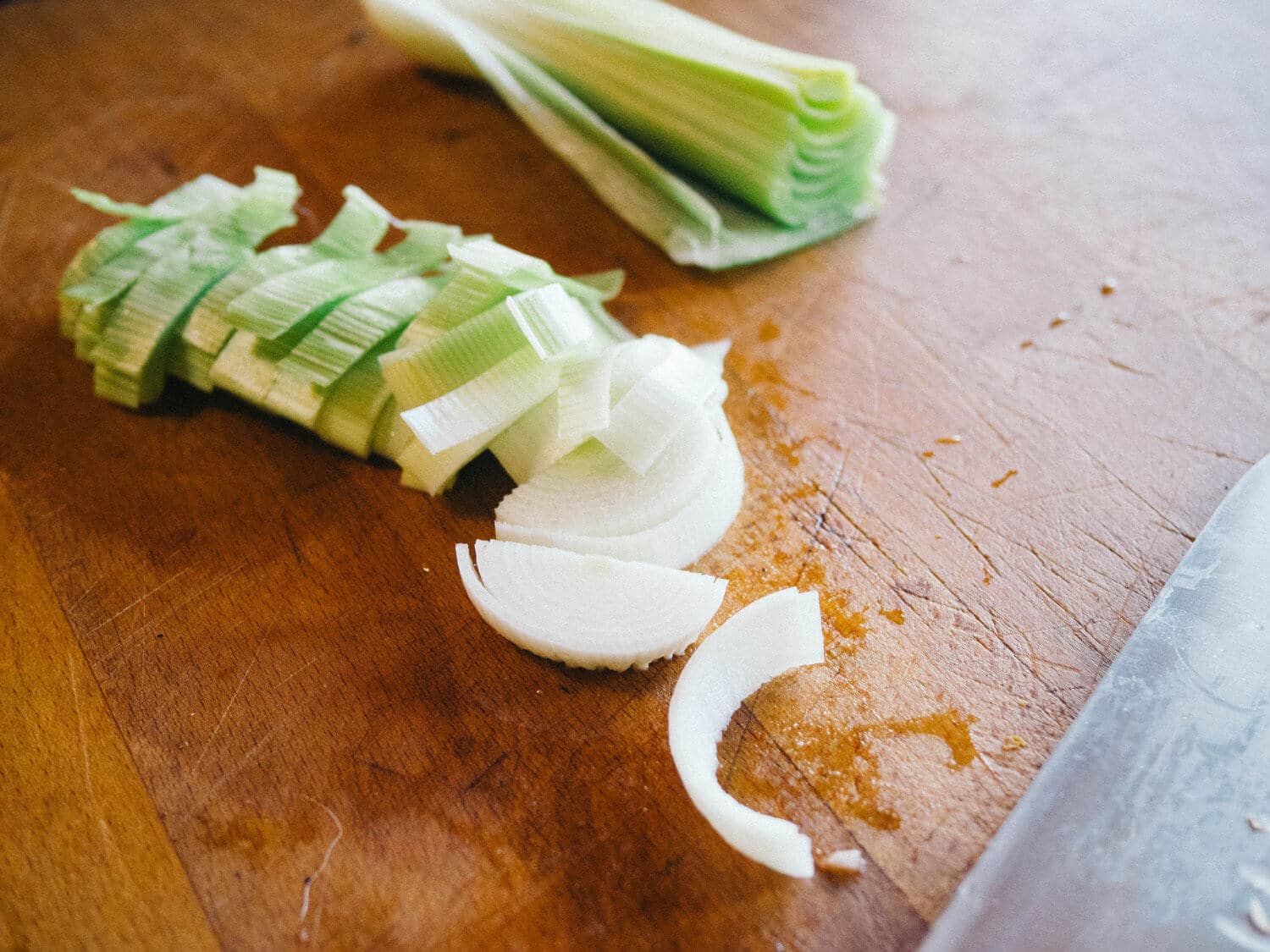
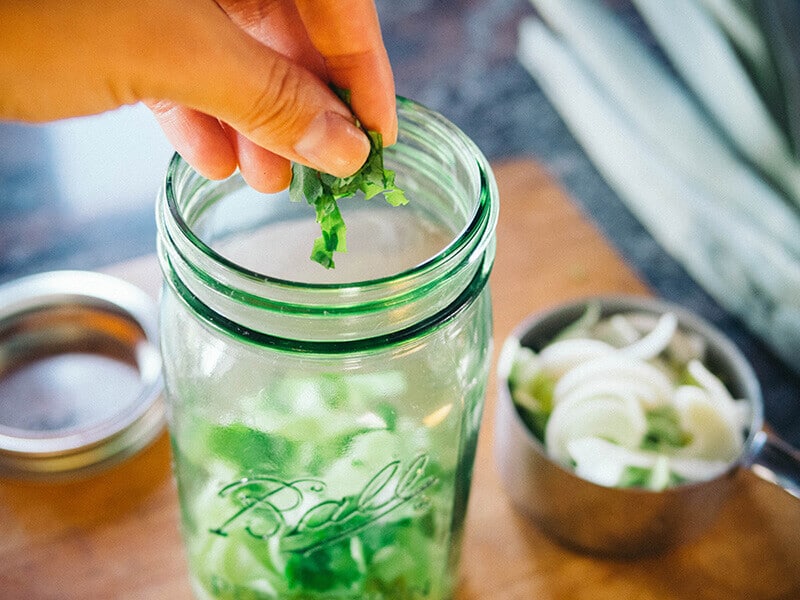
In a separate bowl, stir together the remaining ingredients until the sugar is dissolved.

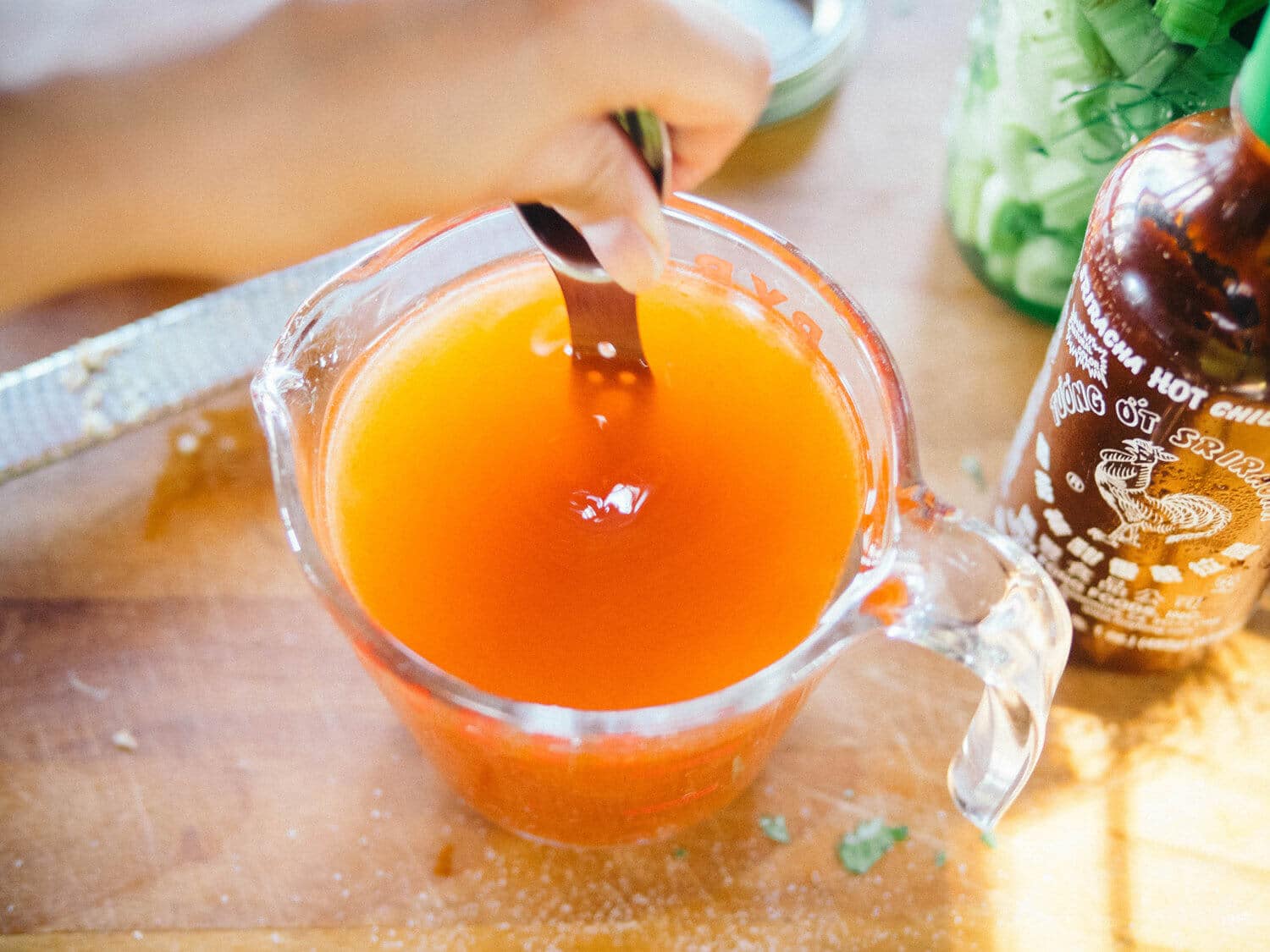
Pour the brine over the vegetables in the jar, leaving about 1/2 inch headspace, and seal with a lid.
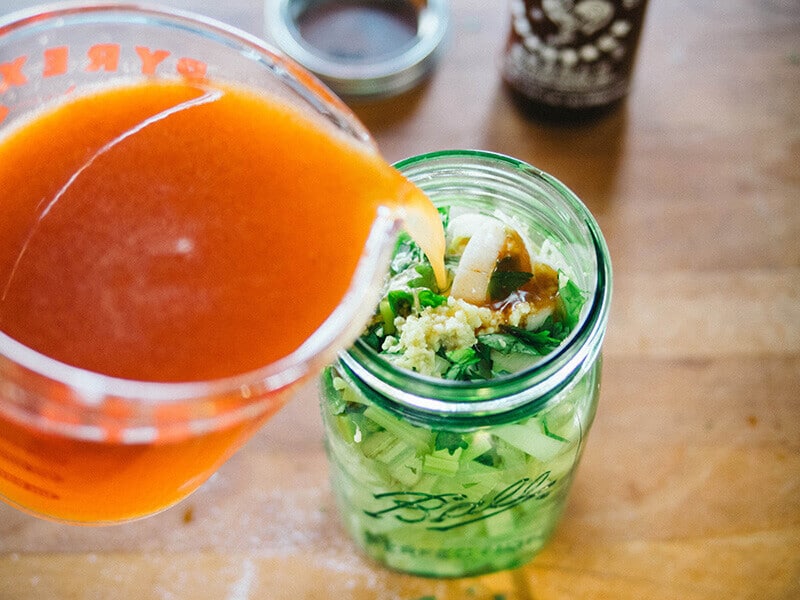
Chill overnight before serving, though the pickles are best after at least three days.
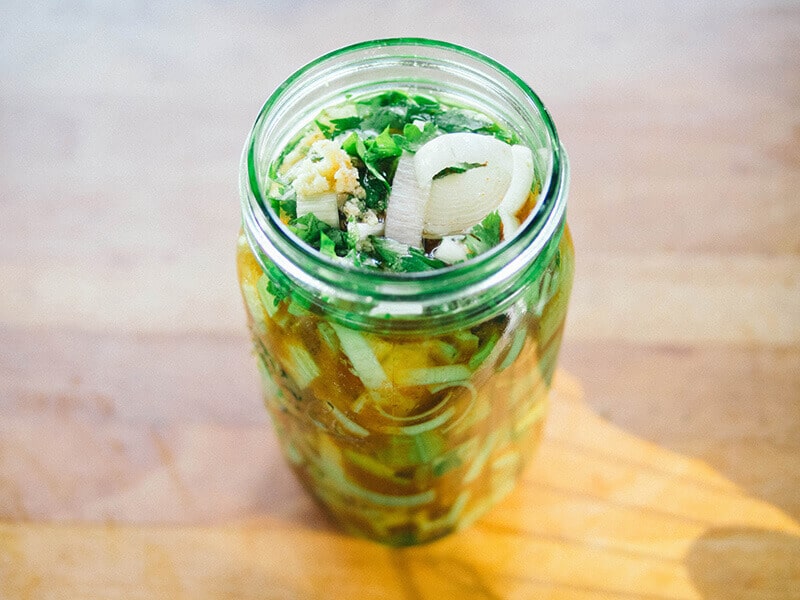
This is the fifth and final recipe post in my summer-long collaboration with Ball Canning. I hope you’ve enjoyed the series, learned a thing or two, and felt inspired to try something new.
If you missed any of my previous recipes, you can check them out at Quick Pickled Roasted Beets, Balsamic Strawberry Jam, Fiesta Peppers, and Chipotle Tomato Jam.
I can’t thank you enough for your support of this partnership and for your enthusiasm in raising money for charity on International Can-It-Forward Day. Let’s do it again next summer!
Send your feedback to the folks at Ball Canning on Twitter or Facebook if you’d like to see me continue this series.
For more canning recipes and inspiration, head over to Freshly Preserved Ideas.
Sriracha Stem Pickles
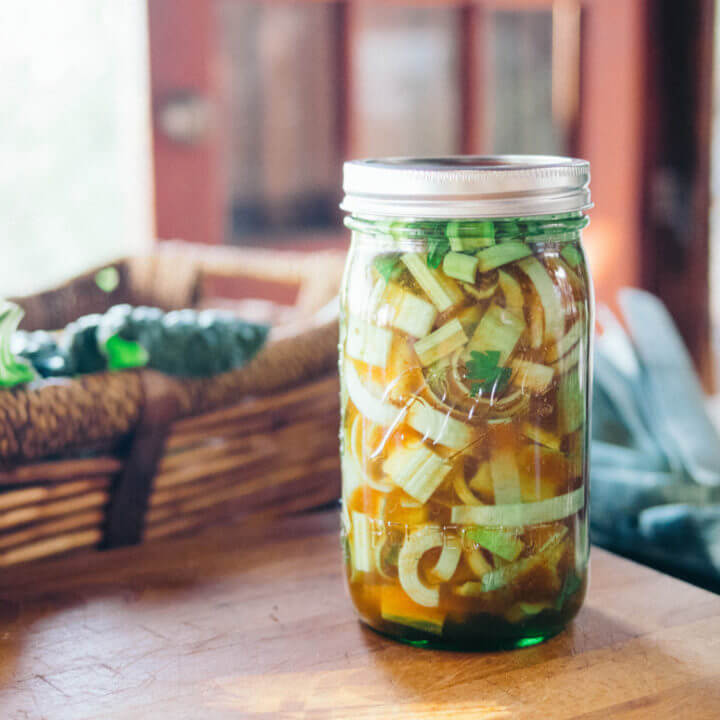
Chard stems are one such scrap that’s sometimes discarded or composted when recipes only call for the tender leaves. The stems, however, have a mild flavor that plays well with other ingredients and a pleasant crispness similar to celery ribs. If you find yourself with a good handful of stems, don’t toss them — pickle them!
Ingredients
- 2 cups chopped chard stems
- 1 cup sliced leek, white and light green stem only
- 1/4 cup chopped cilantro leaves
- 1 teaspoon grated ginger
- 1 cup white vinegar
- 1 cup water
- 1/2 cup sugar
- 2 tablespoons sriracha
Instructions
- Fill a jar with the chard stems, leek, cilantro, and ginger, alternating in layers.
- In a separate bowl, stir together the remaining ingredients until the sugar is dissolved.
- Pour the brine over the vegetables in the jar, leaving about 1/2 inch headspace, and seal with a lid.
- Chill overnight before serving, though the pickles are best after at least three days.
Recommended Products
As an Amazon Associate and member of other affiliate programs, I earn from qualifying purchases.
-
Dalstrong Chef Knife - 8 inch Blade - Shogun Series ELITE - Damascus - Japanese AUS-10V Super Steel - G10 Black Handle - Razor Sharp - Professional Full Tang Chef's Knife - Sheath
-
Wide Mouth Mason Jars 32 oz - (4 Pack) - Ball Wide Mouth 32-Ounces Quart Mason Jars With Airtight lids and Bands - Clear Glass Mason Jars For Storage, Canning, Fermenting, Overnight Oats, Cold Brew Coffee, Freezing + M.E.M Rubber Jar Opener Included
This post is brought to you by Ball Canning, for whom I’m a paid ambassador. Thank you for supporting the brands that support Garden Betty.


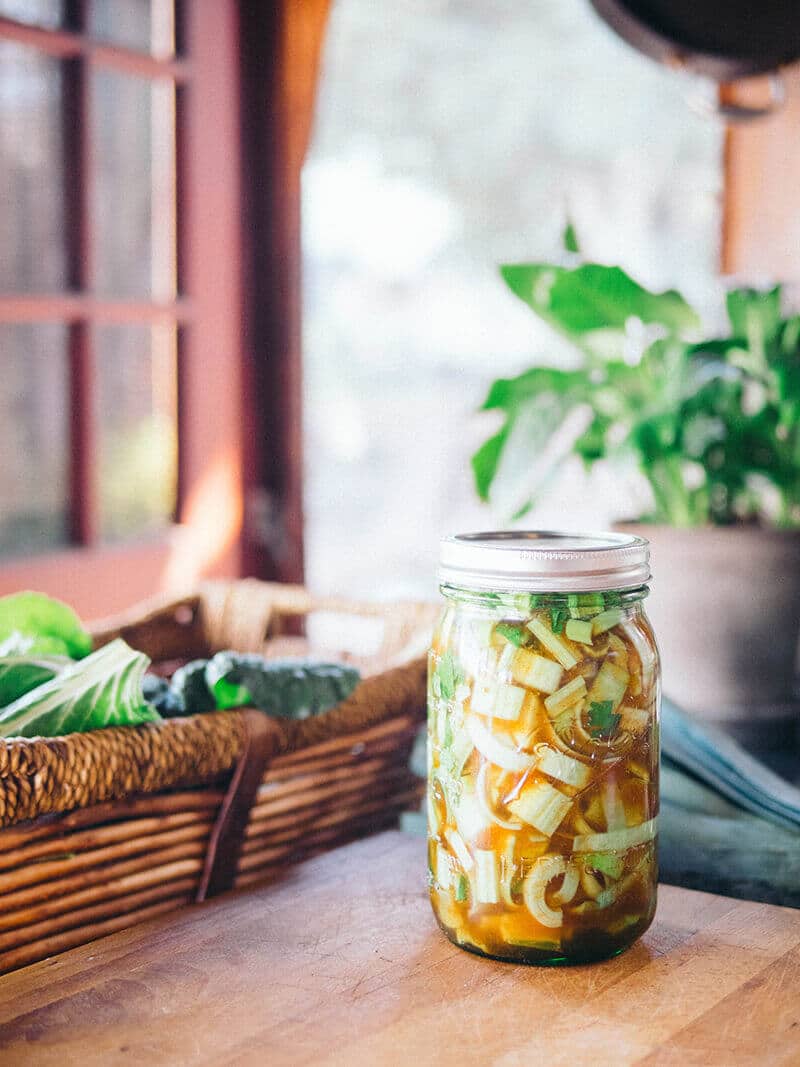















Hi Linda, I just discovered your site and love it. I am into gardening and fermented foods. Can this recipe be converted into a lacto-ferment, and if so, can you provide suggestions? I always prefer a lacto-ferment, as opposed to vinegar pickling.